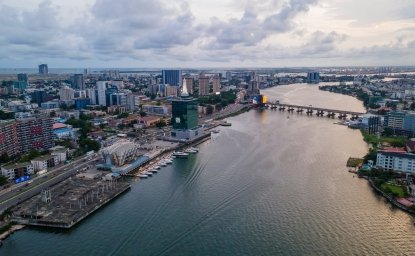
A blog of the Africa Program
Abducted children returned to Ethiopia. Photo courtesy of UNICEF Ethiopia via Flickr Commons.
The Horn of Africa, and specifically, the borderland regions are areas of increasing criminality. Included in this crime are instances of inter-group child abduction which have become increasingly common along the international border. Most laws focus on parental child abduction, while fewer address abduction of children for criminal purposes. However, insurgents from the Murle people cross the international border and abduct children from the borderland communities of Ethiopia.The Murle are a small group of 152,000 people in South Sudan comprising 1% of the South Sudanese population. They live in the Pibor lowland region of the Boma State, near the Ethiopian border along the Gambella Regional State. They are neighbors with the Anyuaa and Nuer on the Ethiopian side of the border. Socially, they are a para-Nilotic group of people and share similar socio-cultural characteristics with the Anyuaa and Nuer people. Economically, they are nomadic people that depend on livestock and herding cattle.
Murle insurgents are the most dangerous child abductors in the region, and across the Ethiopia-South Sudan border. Their motivations for child abduction are two-fold: (1) to increase their population and therefore be more competitive in the region and gain more control over resources, (2) to later trade the children for cattle.
These insurgents prefer to abduct very young children, mostly between two months and four years old, due to the children's early stage in physical and cognitive development and language acquisition. Because children from two to seven years old can learn any language as a mother tongue, the Murle prefer to teach young children their language, cultural values, norms, and supplant their cultural background.
The Anyuaa and Nuer people are the primary victims of these abductions. In 2016, a band of Murle insurgents crossed the Ethiopian border from South Sudan and abducted 131 children from three districts of the Nuer Zone and the Gog district of the Anyuaa zone.1 They locked the children alone inside a hut surrounded by heavily armed men, and gave them only milk during their captivity. Ethiopian troops crossed into South Sudan in search of the abducted children but could only rescue 93 children in that operation. The rest have not yet been repatriated. The 2016 abduction stands out for the number of children taken, however child abductions have been increasing in previous years, 2 and neither the Ethiopian government nor the local administration have taken steps to actively protect its citizens along the border.
The Murle's child abduction practice has disturbed every family of the Anyuaa and the Nuer along the border, and even the local administration could not take any measures to rescue the abducted children. Previously, Murle insurgents avoided casualties while carrying out their raids as to not draw attention to their activities, sometimes combining the abductions with cattle rustling. Thus, the central governments of Ethiopia and South Sudan were unaware of these situations.
Nevertheless, child abduction represents a serious human rights violation that, under international law, should be condemned. Insurgents' activities tear apart families, typically from the Anyuaa and Nuer tribes. Child abduction across international borders is the most heart wrenching of all, and it violates family law and fundamental human rights. The Murle insurgents are strangers who remove children, usually babies, from Anyuaa, Nuer, and other people across the border with the intent to bring up the child as their own, and inculcate these children with their cultural practices and values.
South Sudan should be responsible to enforce rule of law, restrain the Murle from child abduction and cross-border attacks against civilians, and to ensure respect for human rights. The 1980 Convention on the Civil Aspects of International Child Abduction at The Hague establishes legal procedures for the prompt return of children who have been wrongfully removed or retained, and it is the most significant international treaty pertaining to the prevention of international child abduction. However, Ethiopia and South Sudan are not a party to The Hague Convention. The failure of both countries to agree to the convention is one of the challenges facing the cessation of child abductions.
To stem the Murle's child abduction practices, the governments of Ethiopia and South Sudan should take the first steps to protect children from child abductors in accordance with international human rights. Both governments should ratify The Convention on the Civil Aspects of International Child Abduction, and invite the support of the international community if the situation worsens beyond the regional government's capacity to deal with it. They should also ratify and fully implement the African Charter for the Rights and Welfare of the Child and the Optional Protocol to the Convention on the Rights of the Child to further combat child abduction practices in the region.
Moreover, the two governments should work with international partners and Human Rights Watch both to draw international attention to the issue, and to take all appropriate measures to protect children from abduction, including providing adequate security for vulnerable populations. They should also open dialogue with Chieftaincies of the Murle and the Great Boma Governor with the aim of securing the release of abducted children, and seeking an end to future abductions. Besides government officials, the Murle chieftaincies have power to influence the child abductor groups and potentially stop such practices. Chieftaincies should therefore be included in these efforts to reduce child abductions and increase security in the region.
Tasew Gashaw is working towards his PhD dissertation at Addis Ababa University in Peace and Security. He was a former Southern Voices Network for Peacebuilding Scholar in Fall 2017.
1. Gambella Peoples' National Regional State Security Council, Gambella, Ethiopia.
2. See the table of rustled cattle, abducted children, and killed people by Murle insurgents from 2004-2016 in "Cross-border intergroup conflicts in the Horn of Africa: A case study of the Ethiopia-South Sudan borderland people" by Tasew Gashaw, Southern Voices Network For Peacebuilding Scholar, Wilson Center, 2017.
Author

Africa Program
The Africa Program works to address the most critical issues facing Africa and US-Africa relations, build mutually beneficial US-Africa relations, and enhance knowledge and understanding about Africa in the United States. The Program achieves its mission through in-depth research and analyses, public discussion, working groups, and briefings that bring together policymakers, practitioners, and subject matter experts to analyze and offer practical options for tackling key challenges in Africa and in US-Africa relations. Read more

Explore More in Africa Up Close
Browse Africa Up Close
The Innovative Landscape of African Sovereign Wealth Funds



